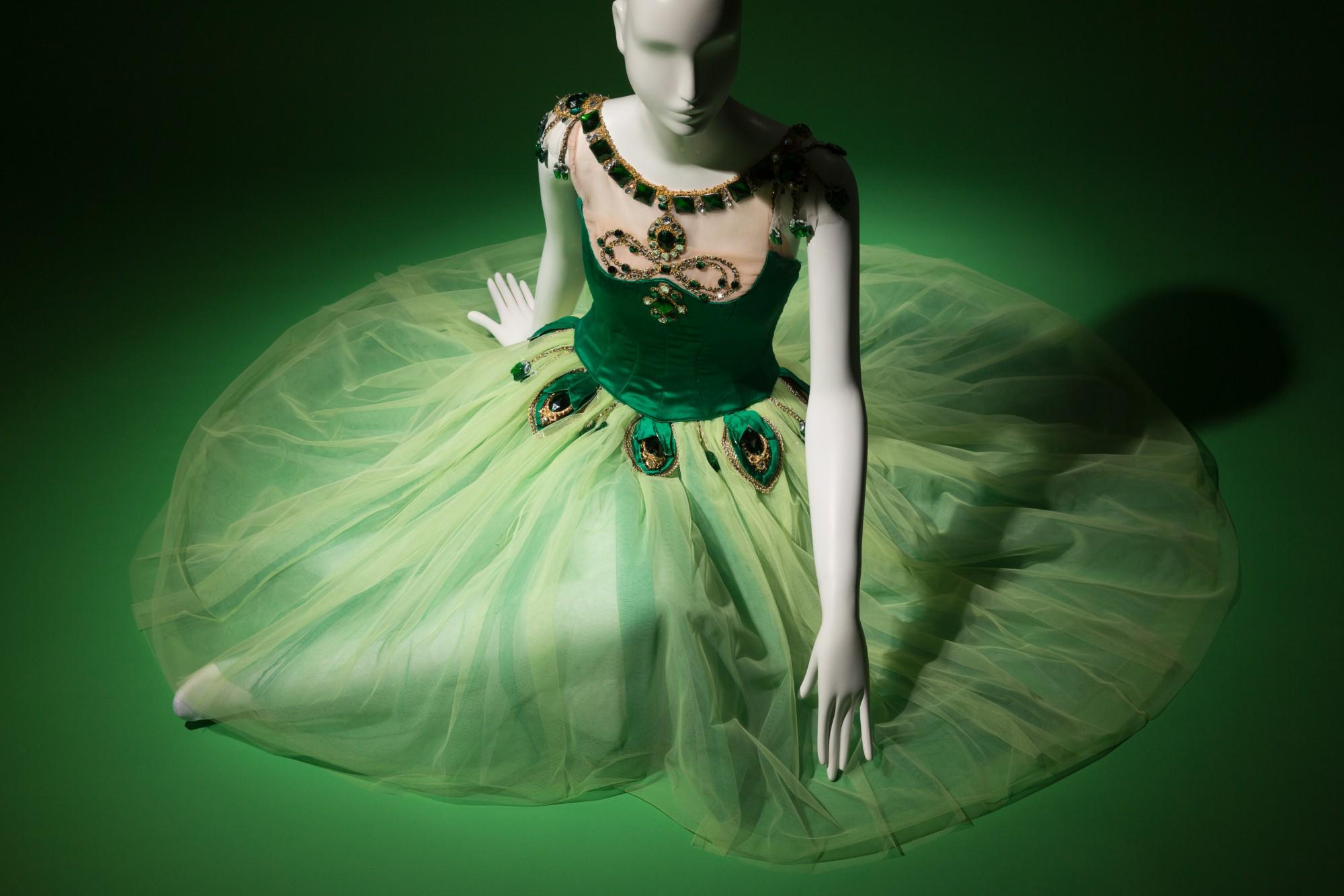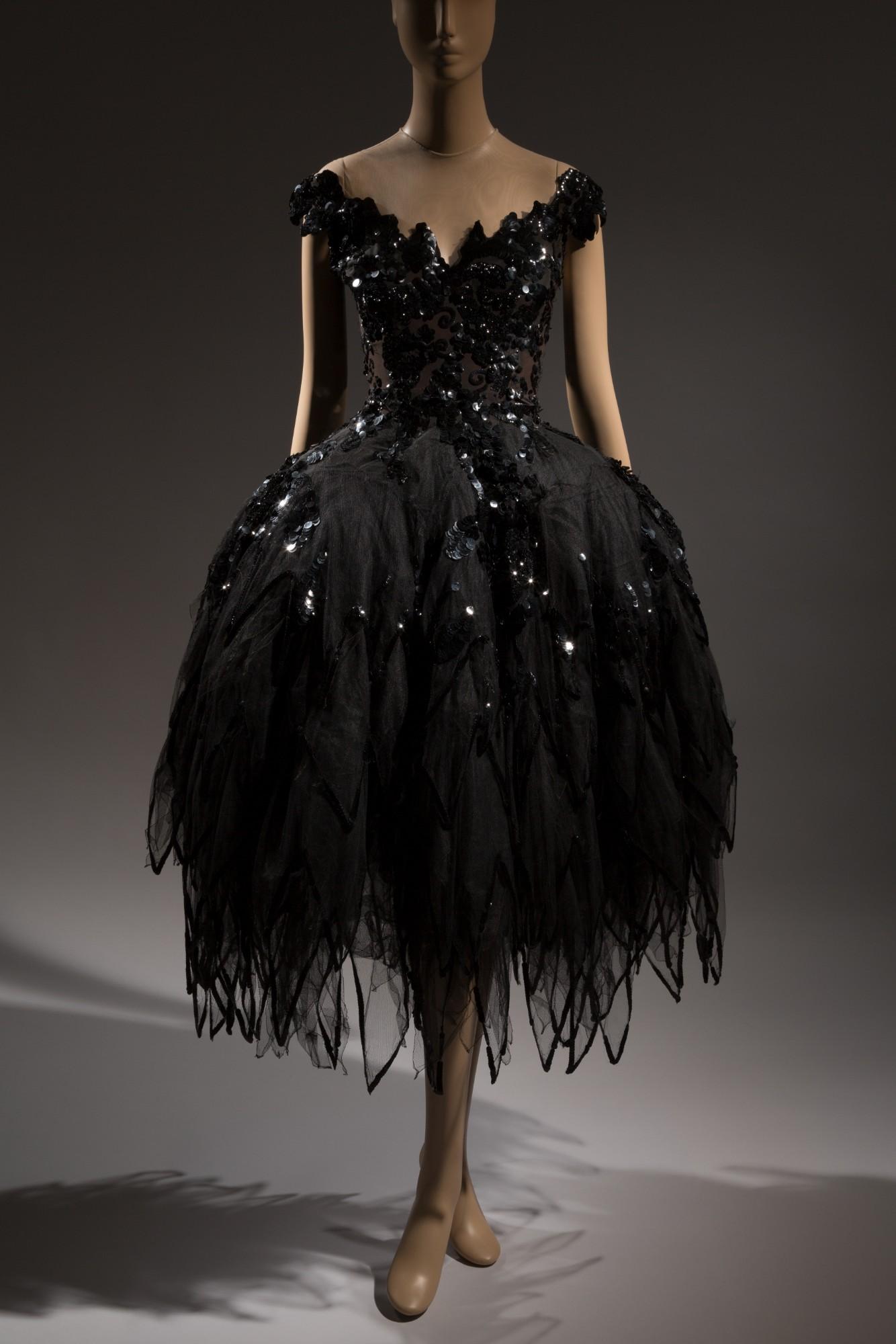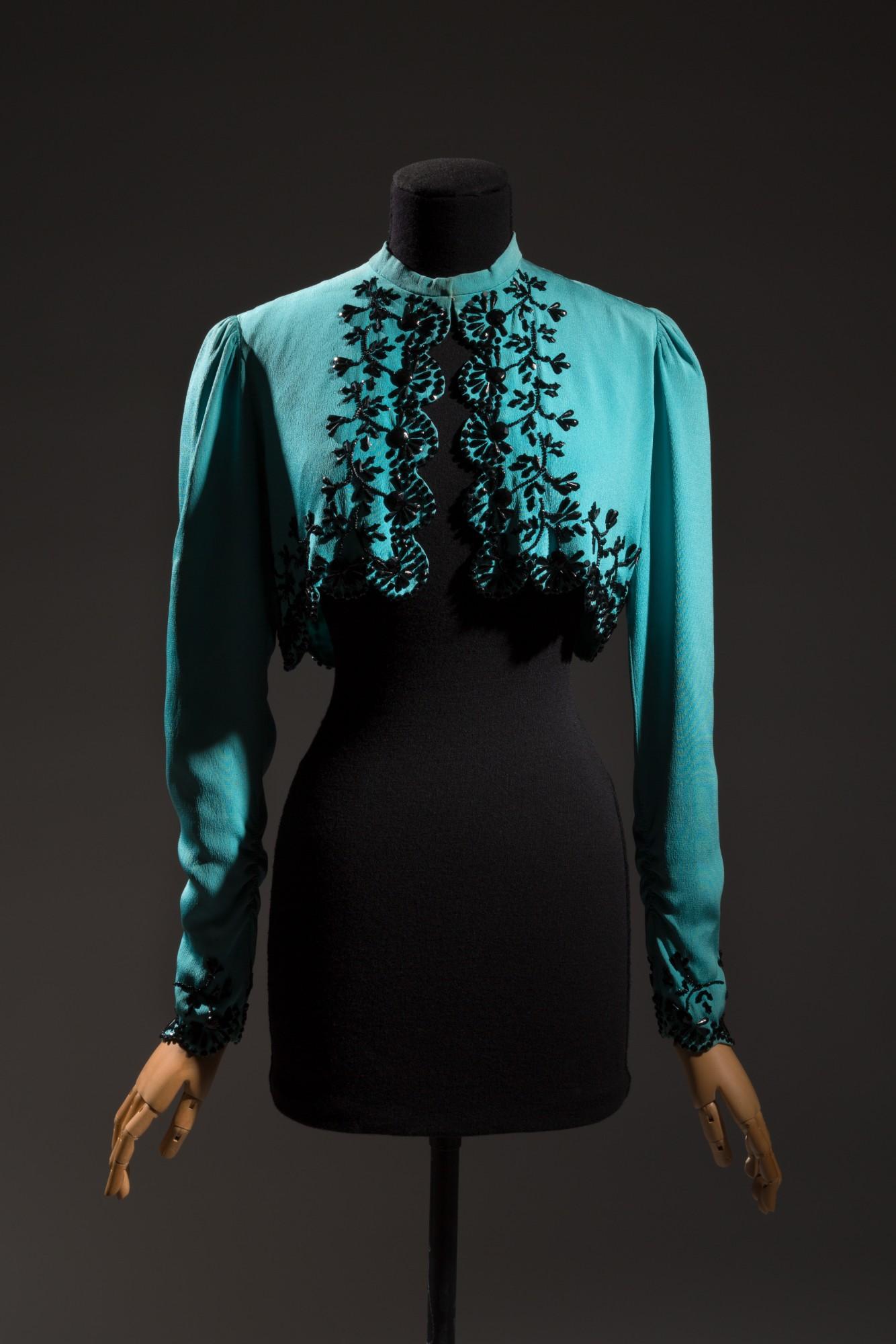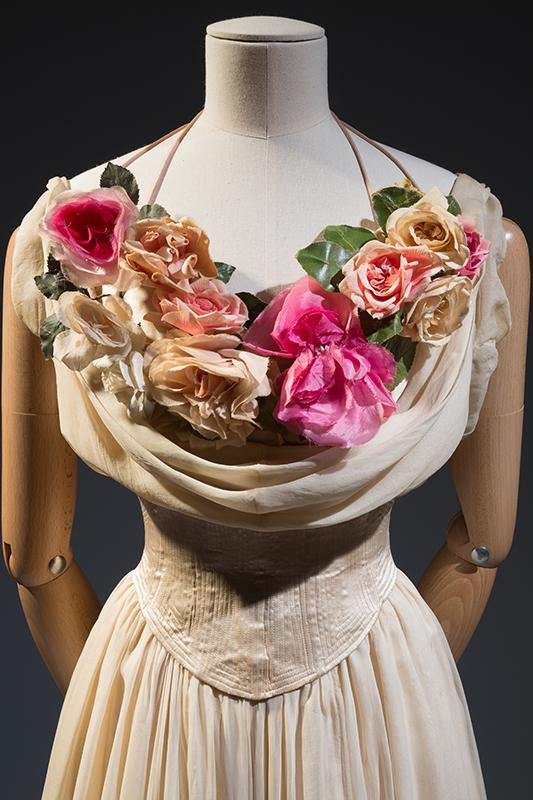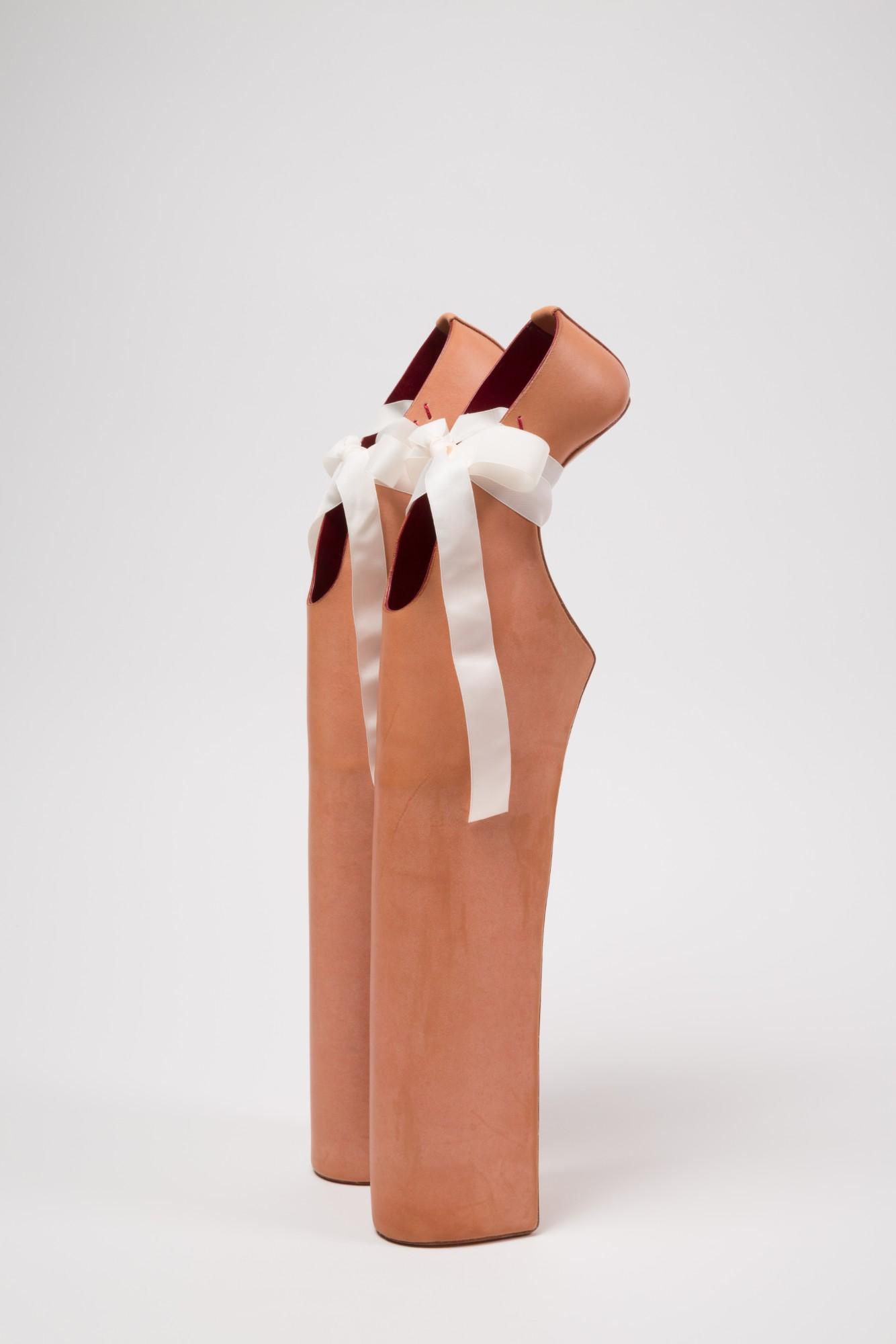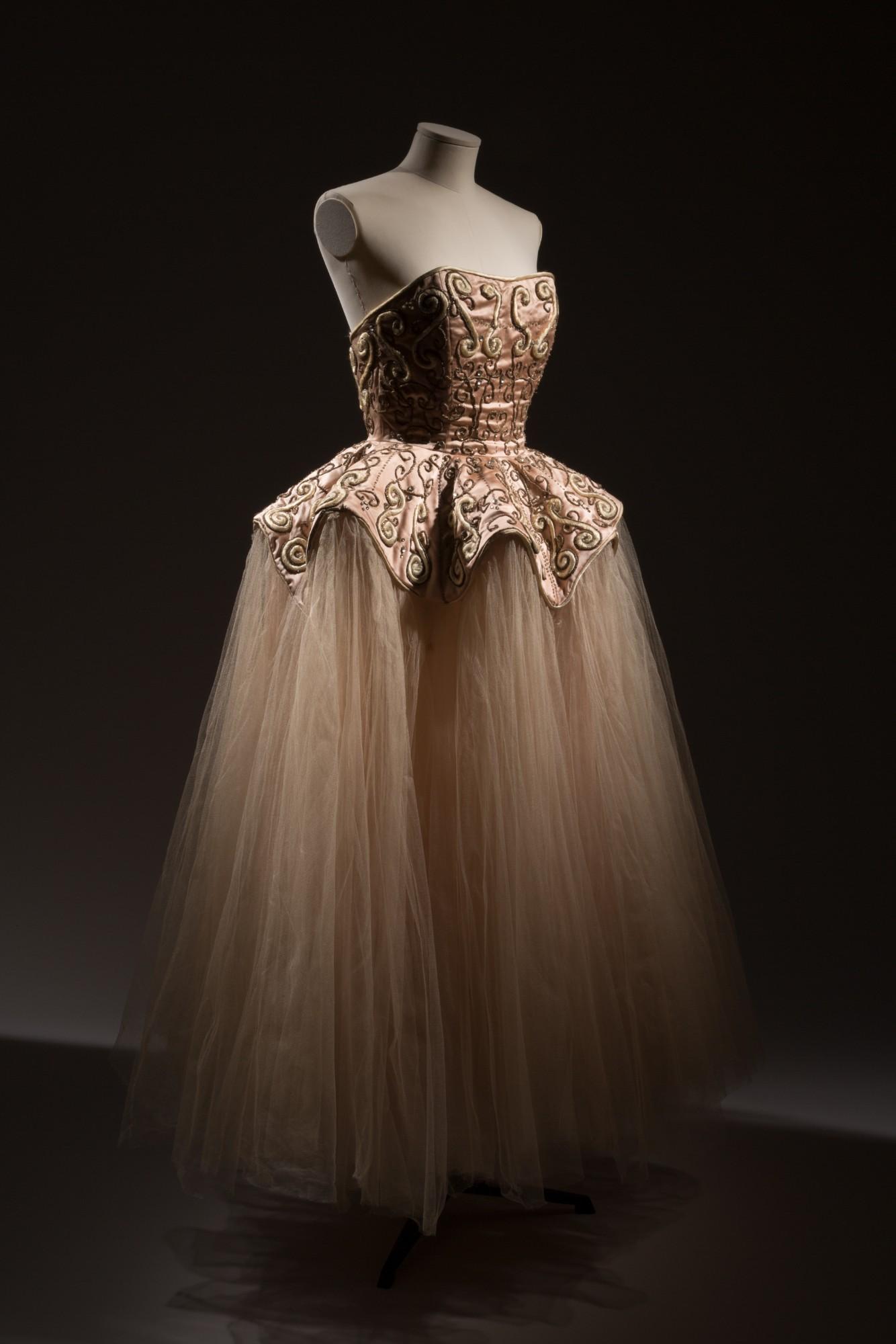“Had it not been for [Ballets Russes founder] Sergei Diaghilev in 1909 we would probably not see ballet become the art form it is,” Dr. Patricia Mears, who curated the exhibition, said during a phone interview. “He completely reinvigorated, elevated it and also shocked audiences with this new modern avant-garde kind of ballet.”
Despite how influential the total work of art of Les Ballets Russes was in pre-World War II arts and culture, Ballerina: Fashion’s Modern Muse, does not give it a lot of space. With the exception of the costume for a production of the avant-garde ballet Firebird, the exhibition focuses on the way iconic costumes such as Swan Lake’s all-white Swan-Queen costume and its black counterpart, Sleeping Beauty’s pink, court-dress-inspired inspired tutu, and Giselle’s and La Sylphide’s diaphanous, full-skirted tutus influenced the fashion industry. The reason? As much as the turbans, the harem pants and the “pagan-Russia-inspired” costumes you see in, respectively, Scheherazade and Rite of Spring were fashionable at the time, “those were not really ballerina costumes,” said Mears. Excluding the more avant-garde costumes was, thus, an editorial decision.




